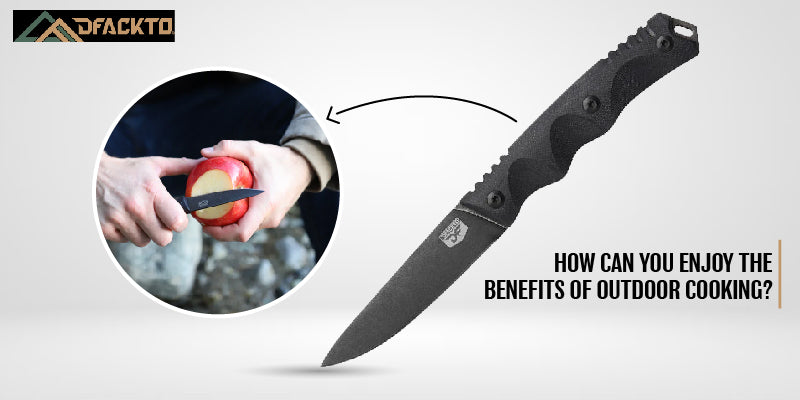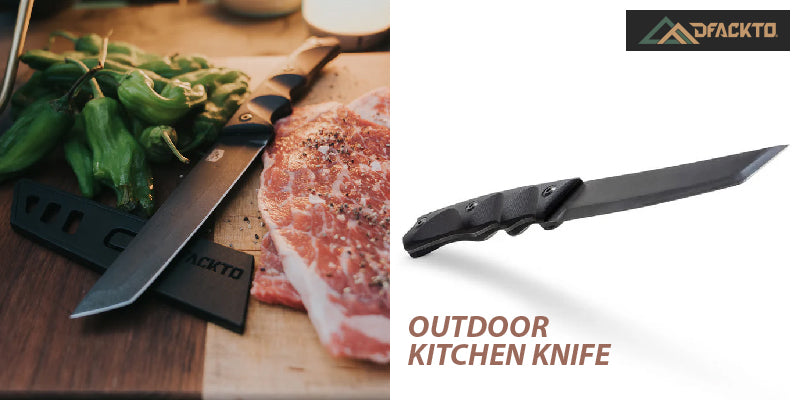Are you an outdoorsman? Then you must be knowing that a reliable camping knife is one of the most valuable tools you require in the wilderness. But what’s equally essential is understanding how to use a knife correctly.
Given the several activities you might need a knife for, from preparing your food and cutting rope to building a shelter and defending yourself, you must have the skills to use your blade effectively and safely. Here are the eight best camping knife skills every outdoor enthusiast must know.
1. Proper Grip Technique
First, hold your camping knife with a firm grip while keeping the thumb on the spine of the blade. It gives you the best control and helps you avoid accidents using the knife.
2. WhittlingWhittling is an essential knife skill you might lean on for everything. From carving tent stakes to shaping spoons, it can help you. Use long drawing strokes rather than applying pressure for an accurate whittling technique. Start at the base of the wood and then toward the end. It will help you avoid slipping or cutting yourself.
3. Slicing and ChoppingIf you are going to process wood, chop vegetables, or meat, perfecting, slicing, and chopping skills are essential. When using a knife for chopping wood, the angle at which the blade is kept is crucial. The ideal angle for chopping with a knife is 20-30 degrees. It is slightly steeper than the angle used for general cutting.
To chop wood using a knife, follow these simple steps:
- Choose a suitable knife: A heavy-duty knife with a strong, thick blade is the best option for chopping wood.
- Prepare the wood: Choose a dry, seasoned wood and remove all the branches or knots.
- Place the knife on the wood: Hold the knife using both hands and place the blade at a 20-30-degree angle.
- Strike the knife: Following a chopping motion, strike the knife into the wood. Ensure that the blade is struck at a consistent angle for a clean cut.
Keep chopping the wood, working your way through the log. Be careful not to let the knife slip or get stuck in the wood.
4. SharpeningTo use a knife effectively, keep it sharp. Dull knives are dangerous as they can slip and slide, resulting in injuries. Here’s a technique you can follow to sharpen your knife:
- Choose a sharpening stone: Many sharpening stones are available, but you can opt for a whetstone that is ideal for sharpening knives.
- Prepare the stone: The sharpening stone must be wet, so you can either soak it in water or pour water on top of it before using it.
- Hold the knife stable enough with the blade facing away from you. Place the blade at an angle to the stone (based on the knife’s sharpening angle).
- Place the blade on the stone and move it back and forth along the length of the stone with light pressure. After a few strokes, turn the blade over and repeat on the side.
- Repeat with finer grit: Once you’ve sharpened the blade using the coarse side of the stone, use it with fine grit.
To test the sharpness of the best camping knife, run it across a piece of paper. A sharp knife will slice through the paper in one go. Remember to sharpen the knife regularly to keep it in top condition.
5. BatoningOne of the most crucial outdoor knife skills is batoning, which is used for splitting wood for a fire. To baton wood, get a suitable dead branch about one-fourth of your blade’s length. Holding the wood top, position the blade vertically and strike it from above on the spine with a heavy object. You can use a sturdy branch or log to strike the spine.
6. FiremakingA good camping knife helps you start a fire, keeps you warm, and cooks your desired meals. To start a fire, you only need dry wood, kindling, and a fire starter such as a Ferro Rod. Cut the wood and kindling into small pieces, then use the knife to create a spark on the fire starter. Now, get the fire going!
7. Cleaning Your KnifeAfter using a knife, remember to clean it properly. Dirt, moisture, and food leftovers can easily cause your blade to rust. Wipe your blade using a clean towel and use a specialized knife cleaner to ensure it stays rust-free.
8. Safe TechniquesFinally, you must know that safe handling is the most essential knife skill. Always stay aware of the position and motion of the blade. Do not move it inconsistently.
The bottom line
Choosing the best camping knife makes all the difference in a safe and successful outdoor adventure. By considering factors like blade material, blade length, handle material, and quality, you can buy a perfectly perfect knife.
Remember, you need to prioritize durability, comfort, and effectiveness when making your choice for a premium camping knife that you can rely on for years.
Dfackto is your go-to source for the most trusted selection of knives. Visit the online store today!



